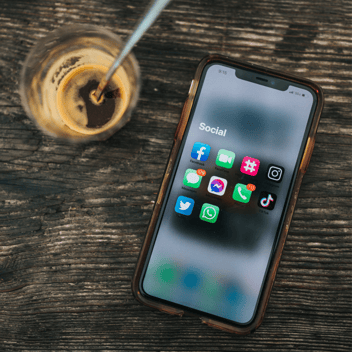In the landscape of online healthcare, where personal connection and trust are foundational, building a community around your practice isn't just beneficial—it's essential. Drawing insights from a Harvard Business Review article, we explore how healthcare practitioners can use social media to create a community that not only supports their practice but also enhances their services.

The Transformative Power of Community
The HBR article emphasizes the significant shift from merely providing a service to fostering a community. The article states, "If a company can transition from simply delivering a product to building a community, they can unlock extraordinary competitive advantages and create a superior business model." Think about how this could apply to your practice. Do you currently have a way for your patients to feel a sense of community? This insight is particularly relevant in healthcare, where patient engagement and trust are crucial. Patients want to feel a sense of support and connection to enhance their healing journey. By building a community, healthcare practitioners can not only improve patient care but also establish a more resilient and adaptive practice.
Why Social Media for Healthcare Practitioners?

Social media is one of your greatest free tools as a healthcare practitioner, especially if your practice is primarily online. It can help you reach your ideal audience and help your patients find a space online where they can feel connected. Social media platforms can help build your community in the following ways:
- Lower Patient Acquisition Costs: Just as enthusiastic community members in a business setting can help acquire new members, satisfied patients can attract new ones through social media and word of mouth, reducing marketing expenses.
- Increased Patient Retention: Patients engaged in a community are less likely to switch providers, improving patient retention and lifetime value.
- Supportive Environment: Similar to how members in a business community support each other, a healthcare community provides a platform for patients to share experiences and offer mutual support, enhancing patient satisfaction and adherence to treatment plans.
- Network Effects: As engagement in your social media community grows, the collective knowledge and value of the community increase, benefiting all members.
Building Your Online Community

Choose the Right Platforms
Identify where your patients and peers are most active. LinkedIn is ideal for professional connections, while Facebook and Instagram are great for patient engagement. Think about the different features that these platforms offer. For example, Instagram offers broadcast channels where you can invite followers to a larger group discussion. This is a great opportunity for like-minded patients to connect, offer a New Year challenge, or share resources.
Share Valuable Content
Educate your community with health tips, medical news, and insights into your practice. This not only establishes your credibility but also is a great way to increase engagement. Valuable, educational content is easily sharable and savable, supporting your account in algorithms and expanding your reach.
Foster Group Discussions
Utilize Facebook groups or Instagram community threads to encourage discussions among patients. This can be particularly effective for managing chronic conditions, where peer support is vital in treatment adherence.
Engage and Interact
Respond to comments, participate in discussions, and create interactive content like polls or Q&A sessions. This two-way interaction builds a stronger bond with your community and also allows your community to voice what type of content they want to see from you.
Building a community on social media is more than a marketing strategy; it's a way to enhance patient care, improve outcomes, and create a supportive environment for both you and your patients. By leveraging the principle of social community and applying it to your niche, you can greater impact on your audience and capitalize on your marketing efforts.






Leave a Comment